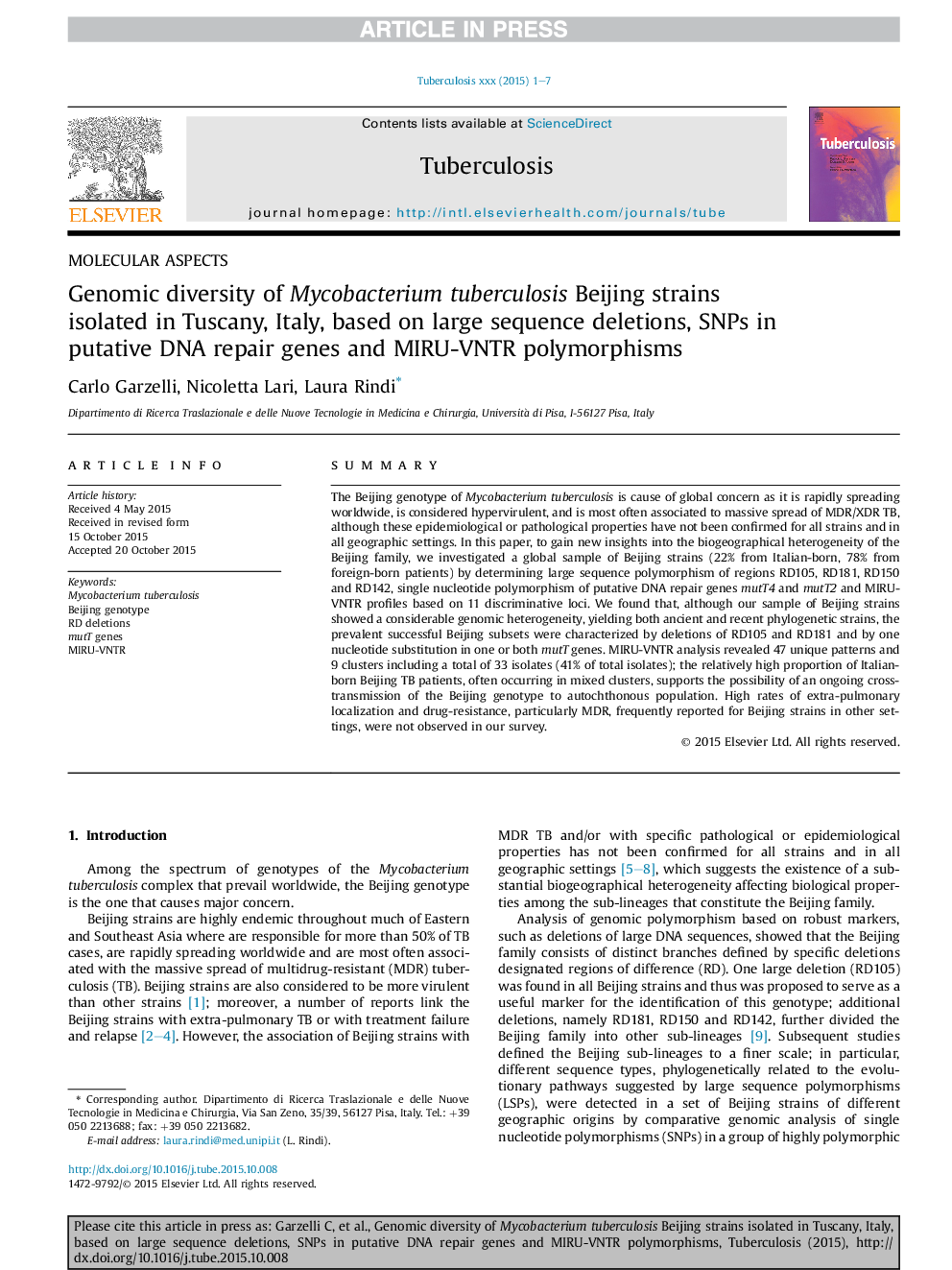| Article ID | Journal | Published Year | Pages | File Type |
|---|---|---|---|---|
| 8485310 | Tuberculosis | 2016 | 7 Pages |
Abstract
The Beijing genotype of Mycobacterium tuberculosis is cause of global concern as it is rapidly spreading worldwide, is considered hypervirulent, and is most often associated to massive spread of MDR/XDR TB, although these epidemiological or pathological properties have not been confirmed for all strains and in all geographic settings. In this paper, to gain new insights into the biogeographical heterogeneity of the Beijing family, we investigated a global sample of Beijing strains (22% from Italian-born, 78% from foreign-born patients) by determining large sequence polymorphism of regions RD105, RD181, RD150 and RD142, single nucleotide polymorphism of putative DNA repair genes mutT4 and mutT2 and MIRU-VNTR profiles based on 11 discriminative loci. We found that, although our sample of Beijing strains showed a considerable genomic heterogeneity, yielding both ancient and recent phylogenetic strains, the prevalent successful Beijing subsets were characterized by deletions of RD105 and RD181 and by one nucleotide substitution in one or both mutT genes. MIRU-VNTR analysis revealed 47 unique patterns and 9 clusters including a total of 33 isolates (41% of total isolates); the relatively high proportion of Italian-born Beijing TB patients, often occurring in mixed clusters, supports the possibility of an ongoing cross-transmission of the Beijing genotype to autochthonous population. High rates of extra-pulmonary localization and drug-resistance, particularly MDR, frequently reported for Beijing strains in other settings, were not observed in our survey.
Related Topics
Life Sciences
Immunology and Microbiology
Applied Microbiology and Biotechnology
Authors
Carlo Garzelli, Nicoletta Lari, Laura Rindi,
